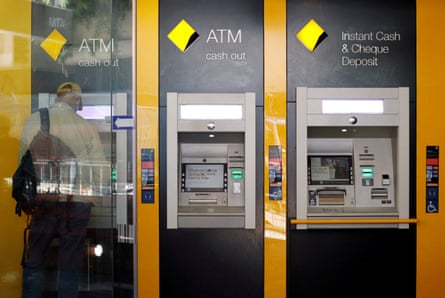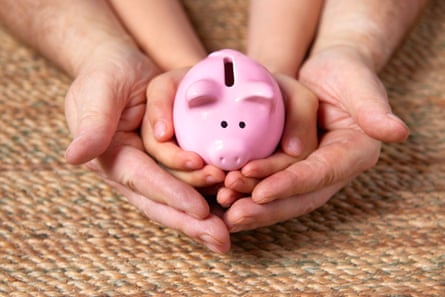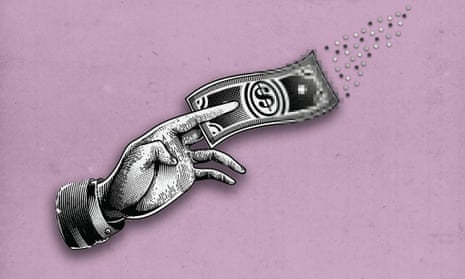Somewhere in the British Museum is a small gold disc. Just 10mm in diameter, it weighs less than a teaspoon of salt. On one side is a lion roaring at a bull, on the other, two squares. This is the Lydian Lion and, at about 2,700 years old, it is perhaps the oldest coin humanity retains today. This is money.
And despite the civilisations that have risen and fallen in the millennia between the minting of the Lydian Lion and now, people today can still – without effort – recognise the Lydian Lion as money. We can imagine its use in the markets of ancient western Turkey. We can picture it being piled in with others in a pouch by a nobleman’s feet. We understand it because most of us grew up using something very much like it: cash. Earned through our labours, exchanged in return for something we wanted or needed.
Until, of course, now.
This month Australia’s treasurer, Jim Chalmers, announced a death sentence for cheques but it is not the only way of paying for things which is in a state of atrophy. Across the country just one in 20 point-of-sale transactions now involves cash. We rarely use it and increasingly we cannot access it. Thousands of bank branches have been shut. ATMs have hauled out of walls and wheeled out of shopping centres en masse. Even one of the last bastions of cash, pocket money, is on the march towards apps and cards. Tap, tap, tap. Click, click, click. We wave a card or a phone and that which we desire is bought.
While the decline of cash is a tale as old as credit cards, we have reached a point where, for many of us, weeks can pass without touching money. Where post-purchase payment plans mean we can buy before we even have the funds to pay for them, and where the prospect of an entirely cashless society does not seem absurd. But, in that cashless world, who might lose out? And how might it change our relationship with money?
A store of wealth
First, however, an irony. While we are decreasingly withdrawing or using it, Australia is awash with cash. In his December speech the Reserve Bank of Australia governor, Philip Lowe, reported that there are about 18 $100 notes and 38 $50 notes in the economy for each Australian. That is $3,700 in banknotes for every person, stored under our metaphorical mattresses.
“Cash is still very popular as a store of wealth,” says Steve Worthington, a professor of financial services from Swinburne University of Technology. “There’s less and less cash in circulation as a payment mechanism but there’s more and more cash that’s being held as a store of wealth.”
Cash, for some people, inspires a sense of comfort, according to Dr Chris Vasantkumar. “Taking cash away completely gets a little tricky,” says the Macquarie University economic anthropologist. “It can even be destabilising.” This, he says, is what happened in Zimbabwe, which shifted quickly to cashlessness without the support of most of the population, “and confidence in money collapsed as a result”.
Australia has a relatively low unbanked population. But there remain groups vulnerable to the decline or end of cash, say both Vasantkumar and Worthington. Regional and rural people with patchy access to internet services, elderly people who tend to favour cash and be less comfortable with digital technology, new migrants, and people simply uncomfortable or unconfident with cashless payment systems.

“We always talk about inclusivity but the danger here is exclusivity,” Worthington says.
“There would be a lot of people excluded from the daily activities of life if there was no cash available to use in payments.”
Sweden, a pioneer in cashlessness, has had to reverse some of its policies in response to the needs of people who had fared badly in the shift. “While the number of holdouts is going down in both Sweden and in Australia, we ignore these folks’ concerns at our peril,” Vasantkumar says. “The moral of the story is to build inclusion into the entire process rather than having to stop and go back at some point because we have left too many behind.”
‘One person’s transparency is another person’s surveillance’
It is for this reason Worthington suggests cash should be protected as a public good – like water or electricity. “We expect to have electricity and water in affluent countries,” he says. “It could be argued that cash is also a public good because of the various groups of people who use it, want to use it. If we’re not careful it will wither on the vine.”
The cash as public infrastructure concept has purchase with Vasantkumar, too. “Going cashless is in some ways a kind of privatisation of what used to be a public asset – money,” he says. Cash transactions profit no one. Standard currency is accessible to all. “Going cashless moves transactions out of this [public] sphere and into a world where you are always relying on privately held banking infrastructures to buy and sell things, and someone is making money off your transactions.
“We wouldn’t usually think about this as similar to selling off the power grid, but in some ways it really is.”

And then there is the convenience/privacy trade-off that we have become so accustomed to making. Cashless transactions make for speedier interactions, entirely unreliant on whether you remembered to go to the ATM that week. They are also more traceable than cash – a friend to law and tax enforcement. “But one person’s transparency is another person’s surveillance,” Vasantkumar says. “How much information about our economic behaviour are we comfortable giving up?”
In Germany, he notes, cash remains the dominant form of payment, particularly in the east, given the country’s history of state surveillance.
Part of the Swedish rebellion against that country’s push towards cashlessness was a fear that electronic systems were more vulnerable to fraud and attack. In crises like war, or more familiar ones to Australians such as catastrophic bushfires or cyber-attack, the system can fail. By contrast, Vasantkumar says: “Cash never goes down.”
Yet cash is – as a concept, as a part of daily life – going down.
And with that decline comes a fundamental question, quite aside from broader social and economic questions of inclusion and security: how do we relate to money if we never hold it? How do we value it if we never physically have to give it away?
A quick answer is that we may spend more.
after newsletter promotion
The pain of handing over cold hard cash
Studies have suggested that it is easier to part with abstract money than that which we must physically dispense. In a 2021 study researchers ran functional magnetic resonance imaging scans on participants who were asked to make real purchases with their own credit cards or cash. The study found that “credit cards facilitate purchasing behaviour”; credit card cues light up the reward networks of the brain more so than when participants are faced with handing over hard cash. The work built on other research, including a 2007 study using fMRI which found pain-processing regions were activated when consumers were asked to pay for goods with cash.
“Immateriality probably has some influence on people’s spending behaviour,” says Prof Francesco Guala, a philosopher and experimental economist at the University of Milan. But our relationship with money is complex.
“There is some psychological evidence that people use several ‘mental modes’ of money,” he says. There is the material model (coins and notes), functional model (“money as whatever you use to purchase things”), the accounting model (“money as the number that appears in your bank statement”) and now we have the “mental model of money as a piece of information stored electronic in some device”.
“People are quite sophisticated in the sense that they can switch from one conception to the other depending on circumstances,” he says. “So when you ask people ‘is this money?’ in experiments, showing for instance a dollar bill or a cigarette accompanied by a vignette explaining that in PoW camps cigarettes were used as a medium of exchange, they are quite flexible in recognising them as money.”
Our cashless mental money is new, a sense of money as being in an abstract “place”, he says, but we have adapted.

But what about those who are growing up cashless? The generation who are learning about money in what Vasantkumar calls “a post-piggy bank world”?
Nearly a decade ago, a Commonwealth Bank survey of 1,000 parents found that two-thirds believed that the abstract nature of money was making it more difficult for children to appreciate its value. Many parents attempt to persist with cash, believing its materiality to contribute to young minds’ ability to comprehend that money is something one receives for labour, and then must release for goods. In the glass bottom of the money jar is a lesson: money is finite. It can come but it can go. Once it is gone, that is it. Empty jar.
Which is, of course, a valuable lesson – were parents regularly in possession of cash money at all. Instead, jars become filled with scrap paper IOUs, and many a parent spends many a late night scrambling to find coins to slip under the pillow of a six-year-old who has unexpectedly lost a tooth.
For this generation, they are not making the shift from material to immaterial money. They are being socialised into an immaterial world.
“We still for the most part tend to think about money as the notes and coins even if the vast majority of us no longer interact with the latter nearly as often as we used to,” Vasantkumar says. But he questions what is almost an artifice of persisting with cash if, ultimately, it becomes redundant.
“If you think about it, it’s kind of weird that we teach kids first about a kind of money that most of us don’t use. But how do we make it real for them if they can’t touch it? This isn’t to say that we will necessarily lose faith in money’s value because its physical form is going away.”
Money has become no less significant in our lives since it became immaterial, Guala says. Instead, as more places and experiences become privatised, he argues, we’re more aware of the value and centrality of money than ever.
Nostalgic for the notes?
Perhaps this generation will have a nostalgia for their Spriggy app in the same way that older ones recall their pink piggy banks.
Because nostalgia, and the culture around cash money, is also part of our considerations as we see cash slip away from our public and private spheres.
Cash is a “social material” – it moves among and between us in society. Connecting us in a promise, a shared agreement that we hold value in this thing. It catches the light. It survives the wash. It has a smell – what is that smell of money? It is something more than polymer. It must then be the smell of a thousand hands, a hundred leather wallets, infinite plastic cash register drawers. It is the smell of an unknowable amount of human interaction.
“Once upon a time we thought money was worth something because it was made out of something valuable,” Vasantkumar says. This in actual fact, he adds, was never true.
“Then that money was replaced by currency made out of basically worthless materials. There was some anxiety about this when it first happened but we got over it.”
We will manage this shift too, he says.

Comments (…)
Sign in or create your Guardian account to join the discussion